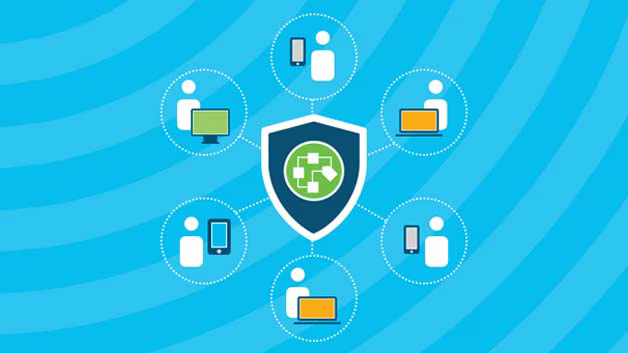In today’s interconnected world, a reliable Event WiFi and connection is the backbone of successful events, powering everything from attendee engagement to vendor transactions. Whether you’re orchestrating a corporate summit or hosting a music festival, ensuring robust WiFi coverage is paramount. In this guide, we’ll delve into strategies to help you conquer the challenges of event WiFi, ensuring a seamless and productive experience for all. And remember, for expert assistance in optimising your event’s WiFi infrastructure, don’t hesitate to get in touch with Obedio.


Pre-Event Planning
Before the hustle and bustle of your event begins, investing time in thorough pre-event planning can lay the groundwork for a successful WiFi experience. According to Rescue Time, On average, people check their phones 58 times per day. The average person spends 3 hours and 15 minutes on their phone every day. And 1 in 5 smartphone users spends upwards of 4.5 hours on average on their phones every day. This data shows the importance of having good wifi at the event, people need to use their phone! Here are some key steps to consider:
- Venue Coordination: Start by establishing clear lines of communication with the venue’s management team. Understand the layout of the venue, its existing WiFi infrastructure, and any limitations or restrictions that may impact connectivity. Discuss anticipated attendance numbers and any specific requirements your event may have.
- Site Survey: Conduct a comprehensive site survey to identify potential WiFi dead zones or areas with weak signal strength. Armed with this information, you can strategically place access points and signal boosters to ensure optimal coverage throughout the venue. Pay close attention to high-traffic areas such as registration desks, presentation stages, and vendor booths.
- Bandwidth Requirements: Determine the bandwidth requirements of your event based on factors such as the number of attendees, the type of activities planned, and any streaming or multimedia presentations. This will help you gauge the capacity needed to support the expected demand and avoid network congestion.
- Contingency Planning: Anticipate potential challenges and have contingency plans in place to address them. Consider factors like inclement weather for outdoor events, power outages, or unforeseen technical issues. Having backup solutions and a responsive support team on standby can help mitigate disruptions and keep the WiFi running smoothly.
By investing time and effort in pre-event planning, you can proactively address WiFi challenges and set the stage for a seamless connectivity experience during your event.
Invest in Quality Equipment
The foundation of a robust event WiFi network lies in the quality of the equipment you deploy. Here’s how to ensure you’re equipped for success:
- High-Performance Networking Gear: Invest in top-tier routers, access points, and networking hardware capable of handling the demands of large-scale events. Look for devices with advanced features like dual-band functionality, beamforming technology, and MU-MIMO (Multi-User, Multiple Input, Multiple Output) support to optimise performance and coverage.
- Scalability and Flexibility: Choose equipment that can scale seamlessly to accommodate fluctuations in attendee numbers and network traffic. Opt for modular solutions that allow for easy expansion and reconfiguration as your event grows or changes in scope.
- Reliable Connectivity Solutions: Consider deploying portable hotspots or dedicated LTE connections to supplement venue WiFi and provide reliable connectivity in areas with poor coverage or high congestion. This ensures uninterrupted access to essential services and applications, regardless of the venue’s infrastructure limitations.
- Redundancy and Failover Mechanisms: Mitigate the risk of network downtime by implementing redundancy and failover mechanisms. Deploy backup routers, redundant internet connections, and battery-powered backup solutions to maintain connectivity in the event of hardware failures or power outages.
- Quality of Service (QoS) Features: Prioritise critical applications and services by leveraging Quality of Service (QoS) features built into your networking equipment. Allocate bandwidth resources dynamically to ensure smooth performance for real-time communication, streaming media, and other latency-sensitive applications.


By investing in high-quality networking equipment and accessories, you can build a reliable and resilient event WiFi infrastructure capable of meeting the demands of even the most challenging environments.
Strategic Placement of Access Points | Event WiFi
Strategically positioning access points (APs) is essential for maximizing WiFi coverage and performance at your event. Follow these guidelines to ensure optimal placement:
- Even Distribution: Distribute access points evenly throughout the venue to provide consistent coverage across all areas. Concentrate APs in high-traffic zones such as registration areas, conference rooms, exhibition halls, and outdoor gathering spaces to accommodate the density of wireless devices.
- Signal Overlap and Handoff: Overlapping signals from adjacent access points help ensure seamless roaming and handoff as attendees move throughout the venue. Aim for a signal overlap of around 15-20% to minimize coverage gaps and prevent signal degradation in transition zones.
- Adjustable Power Levels: Fine-tune the transmit power levels of your access points to optimize coverage without causing interference or signal overlap. Lower power settings can help reduce interference and improve roaming performance, particularly in densely populated areas.
- Height and Mounting: Mount access points at an elevated position, preferably ceiling-mounted or wall-mounted, to maximize coverage and minimize obstruction. Avoid placing APs near metal objects, dense walls, or other sources of interference that can degrade signal quality.
- Outdoor Coverage: If your event includes outdoor areas, deploy weatherproof access points designed for outdoor use. Position outdoor APs strategically to cover outdoor stages, seating areas, food courts, and other open-air spaces, taking into account environmental factors like terrain and vegetation.
- Temporary Installations: For temporary events or venues lacking permanent infrastructure, consider using portable or temporary mounting solutions like tripods, poles, or stands to deploy access points quickly and efficiently. Ensure that temporary installations comply with safety regulations and do not obstruct foot traffic or emergency exits.
By carefully planning the placement of access points and optimising coverage patterns, you can create a robust WiFi network that delivers reliable connectivity to all attendees, both indoors and outdoors. You can learn how to improve WiFi signal for indoor events from this blog post by Microsoft.
Implement Network Segmentation
Network segmentation is crucial for maintaining security, performance, and manageability in event WiFi deployments. You can learn more about what Network Segmentation is in this blog post by Cicso. Here’s how to implement it effectively:
- Separate Networks: Create distinct WiFi networks for different user groups, such as attendees, staff, vendors, and exhibitors. Segmenting networks based on user roles helps prioritize bandwidth allocation, enforce security policies, and streamline network management.
- Attendee Network: Establish a dedicated guest network for attendees to access event resources and internet services. Implement captive portal authentication to verify user credentials and capture necessary information while providing a seamless onboarding experience.
- Staff Network: Set up a separate network for event staff and organisers to facilitate internal communications, operational tasks, and administrative functions. Secure the staff network with strong authentication mechanisms and access controls to prevent unauthorized access and protect sensitive data.
- Vendor and Exhibitor Network: Designate a network specifically for vendors, exhibitors, and sponsors to connect their equipment, POS systems, and promotional displays. Implement VLANs (Virtual Local Area Networks) or subnetting to isolate vendor traffic and prevent interference with attendee or staff communications.
- Traffic Prioritization: Prioritize network traffic based on application type and user requirements using Quality of Service (QoS) policies. Allocate bandwidth resources dynamically to ensure smooth performance for latency-sensitive applications like VoIP, video streaming, and interactive web browsing.
- Firewall Rules and Access Policies: Define firewall rules and access policies to control traffic flows between segmented networks and enforce security boundaries. Implement stateful packet inspection, intrusion detection/prevention systems, and content filtering to safeguard against malicious activities and unauthorized access attempts.
- Network Monitoring and Logging: Deploy monitoring tools and logging mechanisms to track network activity, identify potential security threats, and troubleshoot performance issues in real-time. Monitor bandwidth utilization, client connectivity, and security events to proactively detect and respond to anomalies.


By implementing network segmentation best practices, you can enhance the security, reliability, and performance of your event WiFi infrastructure while providing a tailored experience for attendees, staff, and other stakeholders.
Provide Technical Support
Offering reliable technical support is essential for addressing WiFi-related issues promptly and ensuring a smooth experience for event attendees and staff. Here’s how to provide effective technical support:
- On-Site IT Team: Assemble a dedicated team of IT professionals to provide on-site technical support throughout the duration of the event. Ensure that team members are knowledgeable about the event WiFi infrastructure, networking equipment, and common troubleshooting techniques.
- Help Desk or Support Center: Set up a centralised help desk or support centre where attendees and staff can seek assistance with WiFi connectivity issues, device configurations, and other technical challenges. Clearly communicate the location and operating hours of the help desk through signage, event apps, or announcements.
- Remote Monitoring and Management: Implement remote monitoring and management tools to proactively monitor the health and performance of the event WiFi network. Monitor key metrics such as signal strength, bandwidth utilization, and client connectivity to identify potential issues before they impact users.
- Troubleshooting Resources: Equip your technical support team with comprehensive troubleshooting resources, including knowledge bases, FAQs, troubleshooting guides, and instructional videos. Empower them to quickly diagnose and resolve common WiFi problems while providing clear and concise instructions to users.
- Communication Channels: Establish clear communication channels for reporting WiFi-related issues and requesting technical assistance. Encourage attendees and staff to report problems through designated channels such as phone hotlines, email addresses, or dedicated messaging platforms integrated into the event app.
- Training and Certification: Invest in ongoing training and certification programs to ensure that your technical support team stays abreast of the latest developments in WiFi technology, networking protocols, and troubleshooting methodologies. Equip them with the skills and expertise needed to address complex issues effectively.
- Feedback Mechanisms: Solicit feedback from attendees and staff regarding their WiFi experience during the event. Use surveys, feedback forms, or social media channels to gather input on connectivity issues, network performance, and the overall quality of technical support provided. Use this feedback to identify areas for improvement and refine your support strategies for future events.
By providing comprehensive technical support services, you can enhance the overall event experience, minimise disruptions caused by WiFi-related issues, and ensure that attendees and staff have the resources they need to stay connected and productive. If you are looking for more support with your event wifi, get in touch with Obedio today!
Encourage Bandwidth Conservation for Event WiFi
Managing bandwidth effectively is crucial for ensuring a smooth WiFi experience for all event attendees. Here’s how to encourage bandwidth conservation:
- Educate Attendees: Raise awareness among attendees about the importance of conserving bandwidth to ensure a reliable WiFi experience for everyone. Provide tips and guidelines on minimizing data usage, such as avoiding unnecessary video streaming, limiting file downloads, and closing background applications that consume network resources.
- Bandwidth Allocation: Implement bandwidth management policies to allocate resources fairly and prioritize essential applications and services. Reserve bandwidth for critical functions like event registration, live streaming, and interactive sessions while limiting bandwidth-intensive activities that can monopolize network capacity.
- Limit Bandwidth-Heavy Activities: Encourage attendees to refrain from bandwidth-heavy activities that can strain the network, such as streaming high-definition video or downloading large files. Consider implementing bandwidth caps or time-based restrictions to prevent excessive data usage and ensure equitable access for all users.
- Optimize Event Apps: If your event utilizes a mobile app for agenda management, networking, or content delivery, optimize it to minimize bandwidth consumption. Implement caching mechanisms to store frequently accessed content locally on attendees’ devices, reducing the need for continuous data retrieval from the network.
- Schedule Bandwidth-Intensive Activities: Schedule bandwidth-intensive activities such as software updates, cloud backups, and multimedia presentations during off-peak hours to minimize their impact on overall network performance. Coordinate with event organizers and presenters to stagger resource-intensive tasks and distribute network load evenly throughout the day.
- Provide Alternative Connectivity Options: Offer alternative connectivity options for attendees who require high-bandwidth services or have specific networking needs. Set up dedicated wired Ethernet connections or provide access to cellular data networks as supplemental options for users with critical connectivity requirements.
- Monitor and Enforce Policies: Monitor network traffic in real-time to identify bandwidth hogs and enforce bandwidth management policies as needed. Implement traffic shaping, rate limiting, or quality of service (QoS) mechanisms to regulate bandwidth usage and ensure fair distribution of resources across all users.
By promoting bandwidth conservation practices and implementing effective bandwidth management strategies, you can optimise network performance, minimise congestion, and deliver a seamless WiFi experience for all event attendees.
Getting the best Event WiFi
Mastering event WiFi is a multifaceted endeavor that requires careful planning, strategic deployment of resources, and proactive management throughout the event lifecycle. By following the tips outlined in this guide, you can create a robust and reliable WiFi infrastructure that enhances the overall experience for attendees, staff, and stakeholders alike.
From pre-event planning and investment in quality equipment to strategic placement of access points, network segmentation, and provision of technical support, every aspect of your WiFi deployment plays a crucial role in ensuring a seamless connectivity experience. By prioritizing bandwidth conservation and implementing effective management strategies, you can minimize disruptions, optimize network performance, and provide a superior WiFi experience for all event participants.
Remember, successful event WiFi isn’t just about connectivity—it’s about enabling collaboration, facilitating communication, and empowering attendees to make the most of their experience. By leveraging the right technologies, best practices, and support mechanisms, you can transform your event WiFi from a potential pain point into a seamless enabler of engagement and productivity.
For expert assistance in optimising your event’s WiFi infrastructure and ensuring a truly seamless connection, don’t hesitate to get in touch with Obedio. With our experience and expertise, we can help you deliver a WiFi experience that exceeds expectations and leaves a lasting impression on attendees. Here’s to smooth sailing—and seamless surfing—at your next event!
